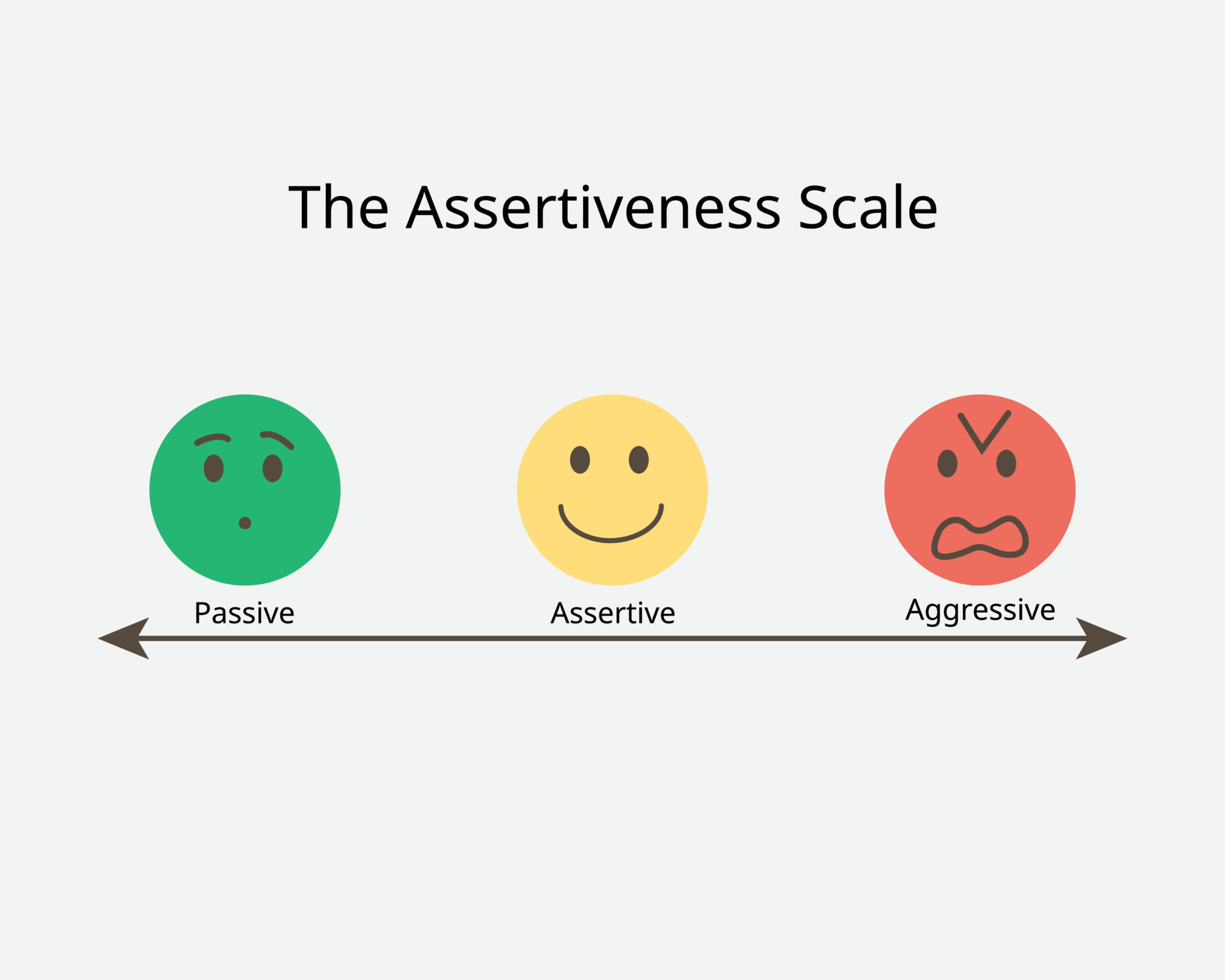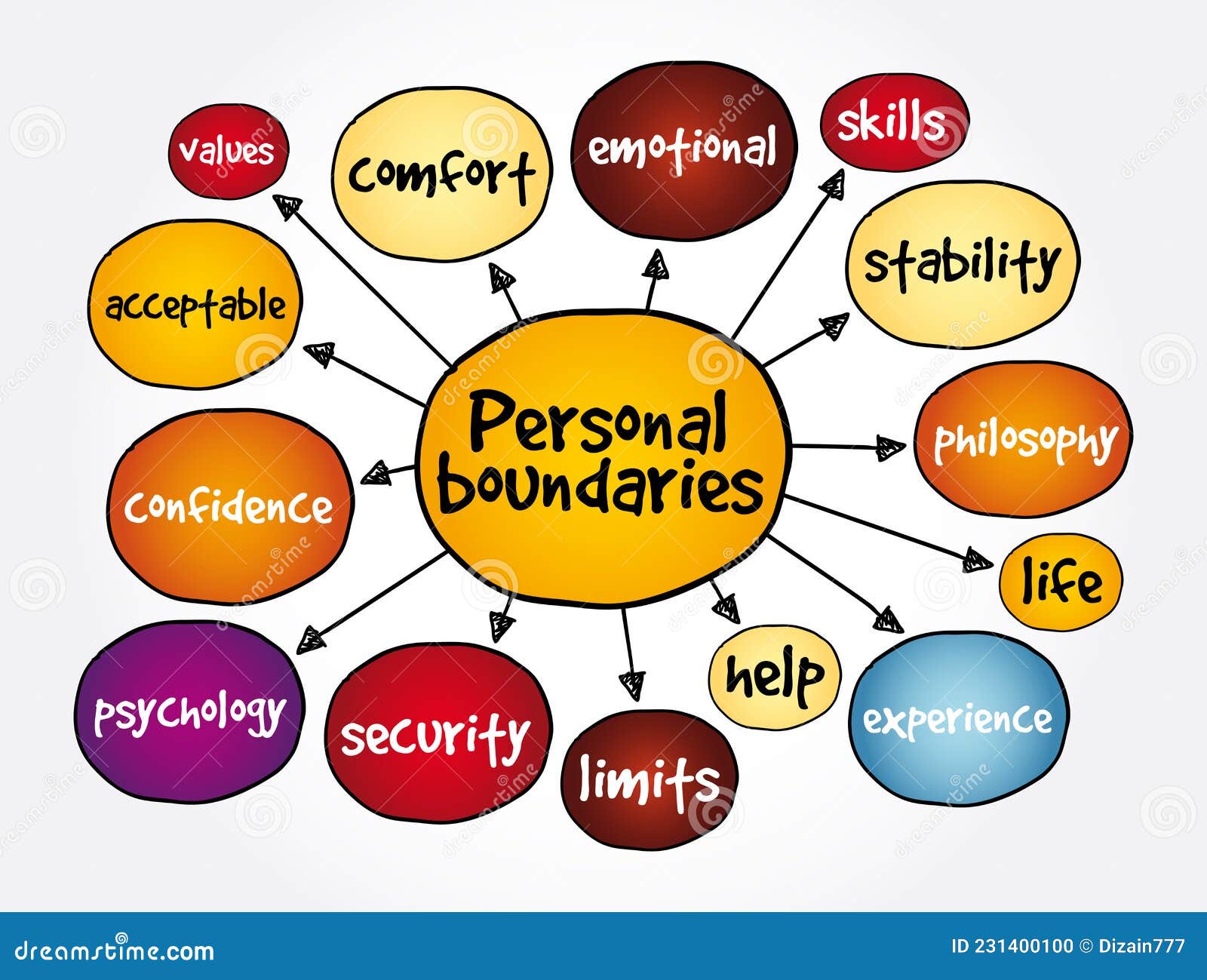
In a world where boundaries are often blurred, assertiveness is crucial for maintaining self-respect and establishing healthy relationships. But navigating personal boundaries can be a daunting task, leaving many feeling unsure and vulnerable.
One of the biggest challenges people face is the fear of upsetting others or being seen as aggressive. This can lead to suppressing our needs and opinions, which ultimately damages our self-worth and relationships.

Boundaries and why they are essential for your marriage – Source mikeandsusandawson.com
The Art of Assertiveness: Navigating Personal Boundaries with Confidence
The art of assertiveness is about finding a balance between passivity and aggression. It’s about communicating our thoughts, feelings, and needs in a respectful and confident manner while respecting the boundaries of others.

Talia Bombola | Confidence & Assertiveness Specialist™ – GOSS – Source gossclub.com
Assertiveness can help us:
- Stand up for ourselves and defend our rights
- Build stronger and healthier relationships
- Boost our self-esteem and confidence
Personal Experiences of Assertiveness
I recall a time when a colleague repeatedly interrupted me during a presentation. Initially, I felt nervous and unsure of how to address it. However, I took a deep breath and assertively stated, “Excuse me, but I’d like to finish my point before you interject.” My colleague apologized and gave me the space to complete my presentation. This experience taught me the power of assertiveness and how it can empower us to establish and maintain our boundaries.

the assertiveness scale to see the different of passive and aggressive – Source www.vecteezy.com
Definition and Explanation of Assertiveness
Assertiveness involves expressing oneself clearly, directly, and honestly, while respecting the rights and feelings of others. It’s not about dominating or being aggressive, but rather about communicating our perspectives and needs assertively and confidently.

Pin de Clemencia en NO | Psicologa emocional, Motivación para la salud – Source www.pinterest.es
Effective assertiveness includes:
- Maintaining eye contact
- Using “I” statements
- Speaking clearly and respectfully
- Listening actively to others
History and Myths of Assertiveness
Historically, assertiveness has been associated with masculinity and aggression. However, modern psychology recognizes that assertiveness is equally important for both genders and is crucial for healthy communication.

Setting Limits: How Can Boundaries Help My Family? | FamilyFire – Source familyfire.com
Some myths about assertiveness include:
- Assertiveness is only for extroverts
- Assertive people are always confrontational
- Assertiveness is disrespectful
Hidden Secrets of Assertiveness
Assertiveness is not a fixed trait but a skill that can be developed and improved. By practicing assertiveness regularly, we can increase our confidence and improve our relationships. Some key secrets of effective assertiveness include:
- Understanding our rights and needs
- Setting clear boundaries
- Communicating our thoughts and feelings assertively
- Practicing active listening

Fishing Has No Boundaries | Confidence Learning Center | Brainerd Lakes – Source campconfidence.com
Recommendations for Developing Assertiveness
Developing assertiveness takes time and effort. Here are some recommendations:
- Identify situations where you struggle with assertiveness
- Role-play different scenarios to practice assertive communication
- Seek support from a therapist or counselor
- Join support groups or workshops on assertiveness

Personal Boundaries Mind Map, Concept for Presentations and Reports – Source www.dreamstime.com
Assertiveness in Different Situations
Assertiveness is not a one-size-fits-all approach. It’s important to adapt our assertiveness strategies to different situations. For example:
- In a professional setting, assertiveness may involve setting boundaries with colleagues or negotiating for promotions
- In personal relationships, assertiveness may involve expressing our needs and emotions in a healthy way or setting boundaries with family and friends
- In social situations, assertiveness may involve standing up for ourselves in uncomfortable conversations or expressing our opinions with confidence
Tips for Effective Assertiveness
To be effectively assertive, consider the following tips:
- Use “I” statements to express your thoughts and feelings
- Maintain eye contact and speak clearly
- Be respectful of others’ opinions, even if you disagree
- Practice active listening and show that you’re genuinely interested in what others have to say

Articles » Measuring Assertiveness | Assertiveness, Assertive – Source www.pinterest.co.uk
Assertiveness and Nonverbal Communication
Nonverbal communication plays a significant role in assertiveness. Maintaining eye contact, having an upright posture, and using gestures appropriately can convey confidence and assertiveness.
Fun Facts about Assertiveness
Here are some fun facts about assertiveness:
- Assertiveness is not about being aggressive or demanding
- Assertive people are more likely to be successful in their careers and relationships
- Assertiveness can help reduce stress and improve mental health

Assertiveness: How to Be More Assertive at Work and in Life – Source www.betterup.com
How to Practice Assertiveness
Practicing assertiveness regularly is crucial for developing this skill. Start by practicing small acts of assertiveness, such as expressing your preferences or setting boundaries with friends or colleagues. Gradually, you can challenge yourself in more challenging situations and become more confident in your ability to communicate assertively.
What if Assertiveness Fails?
In some cases, assertiveness may not resolve a conflict or change the behavior of others. This does not mean that assertiveness is ineffective. Instead, it highlights the importance of being prepared for different outcomes. If assertiveness fails, consider the following:
- Re-evaluate the situation and identify other possible solutions
- Seek support from a trusted friend, family member, or therapist
- Consider whether the relationship or situation is worth pursuing

» #MentalHealthMonday: Setting Healthy Boundaries – Source www.tndf.ca
Listicle of Assertiveness Strategies
- Use “I” statements: “I feel…”
- Maintain eye contact
- Speak clearly and confidently
- Be respectful of others’ opinions
- Practice active listening
Questions and Answers about Assertiveness
- Q: Is assertiveness the same as aggression?
- A: No, assertiveness is about expressing ourselves respectfully while respecting others, while aggression involves imposing our will on others.
- Q: How can I become more assertive in personal relationships?
- A: Start by expressing your needs and feelings respectfully, setting boundaries, and practicing active listening.
- Q: Is it okay to be assertive with people in authority?
- A: Yes, assertiveness can be used to communicate our needs and perspectives to authority figures while maintaining respect.
- Q: Can assertiveness be learned?
- A: Yes, assertiveness is a skill that can be developed and improved through practice and learning.
Conclusion of The Art of Assertiveness: Navigating Personal Boundaries with Confidence
Assertiveness is a powerful tool that can help us navigate personal boundaries with confidence. By understanding the principles of assertiveness, practicing effective communication strategies, and overcoming the myths and misconceptions surrounding it, we can become more assertive individuals and build stronger, healthier relationships.